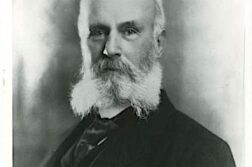NEARLY 200 YEARS AGO, the French novelist Honoré de Balzac created a remarkable character, Vautrin, a charming, hyper-masculine master criminal, and a man who loves men. In three of Balzac’s most popular novels, an important part of the plot turns on Vautrin’s love for an exceptionally handsome, much younger man: 21-year-old Eugène de Rastignac. in Père Goriot, twenty-year-old Lucien de Rubempré in the climactic scene of Lost Illusions and in A Harlot High and Low, and 27-year-old Théodore Calvi (nicknamed “Madeleine”), who doesn’t appear until the end of the last book, when Vautrin is around fifty, but who had also been involved with Vautrin a decade before, at the age of eighteen.
There are, to be sure, no sex scenes: Vautrin does not sleep with Eugène, may or may not have slept with Lucien, and clearly consummates a relationship only with his fellow criminal Théodore. But these novels contain some remarkable plot twists, several of which this essay will spoil. Readers who prefer a wholly fresh experience are encouraged to stop after this paragraph and read Balzac for themselves.* Far from dry “classics,” you will find larger-than-life characters and plots as dramatic—as melodramatic—as the soapiest daytime drama. You will also have to plow through some slow passages as Balzac sets up the next bout of breakneck action, and you will have to forgive an occasional caricature. But you will be rewarded with a broad, rich, and sympathetic perspective on 19th-century French life, and on human nature itself.
The three young men in whom Vautrin takes an interest are all strikingly attractive. Lucien is described most glowingly:






